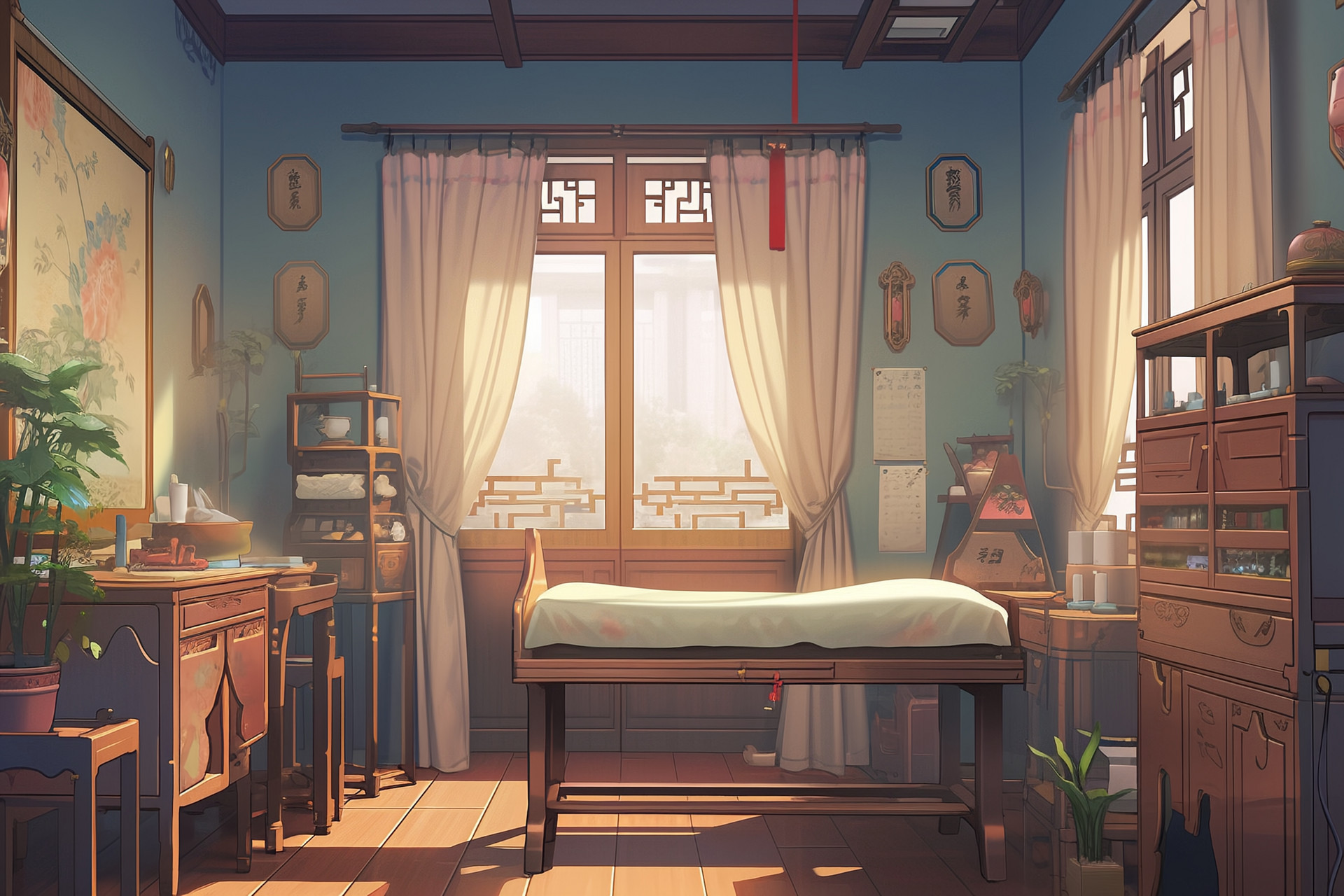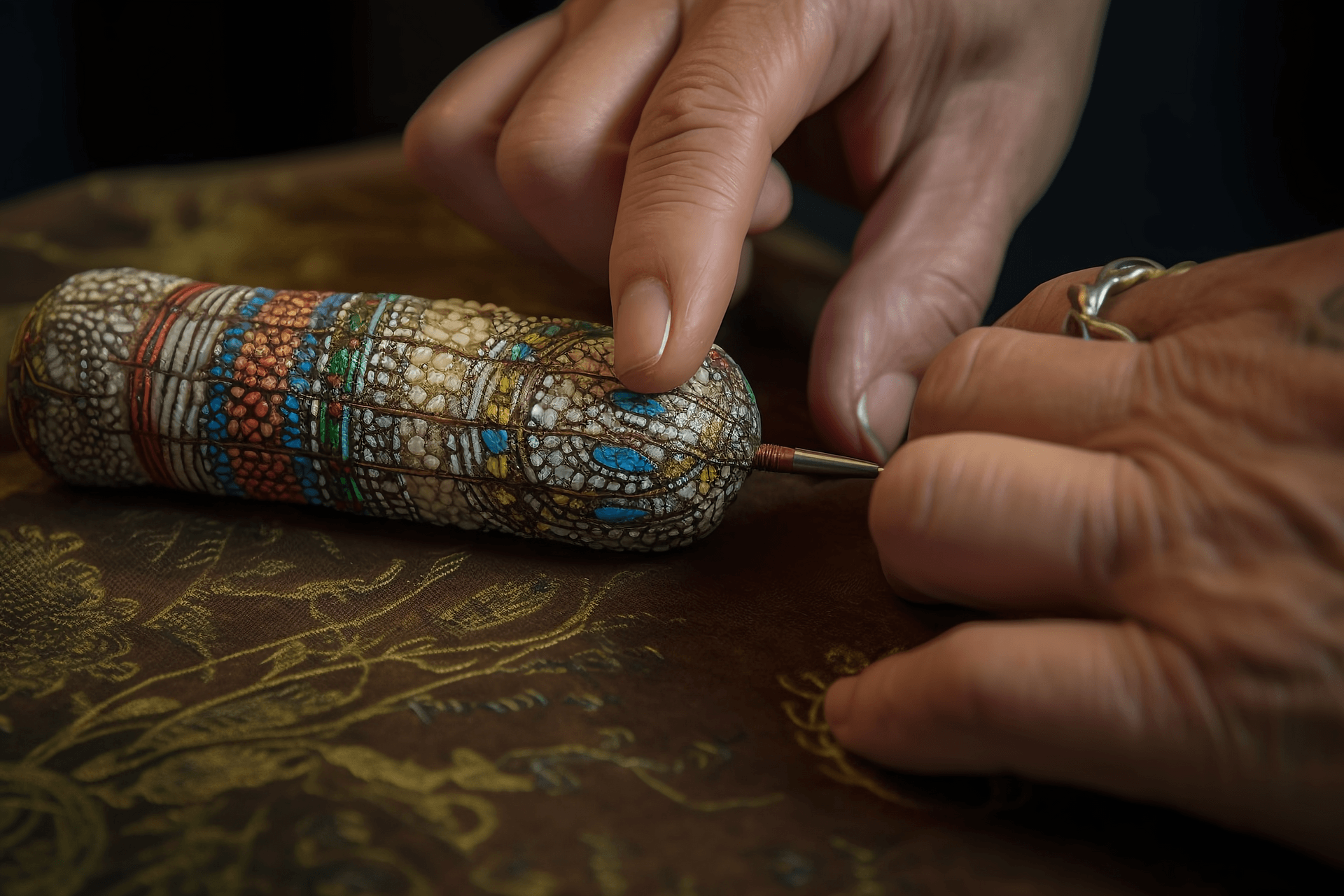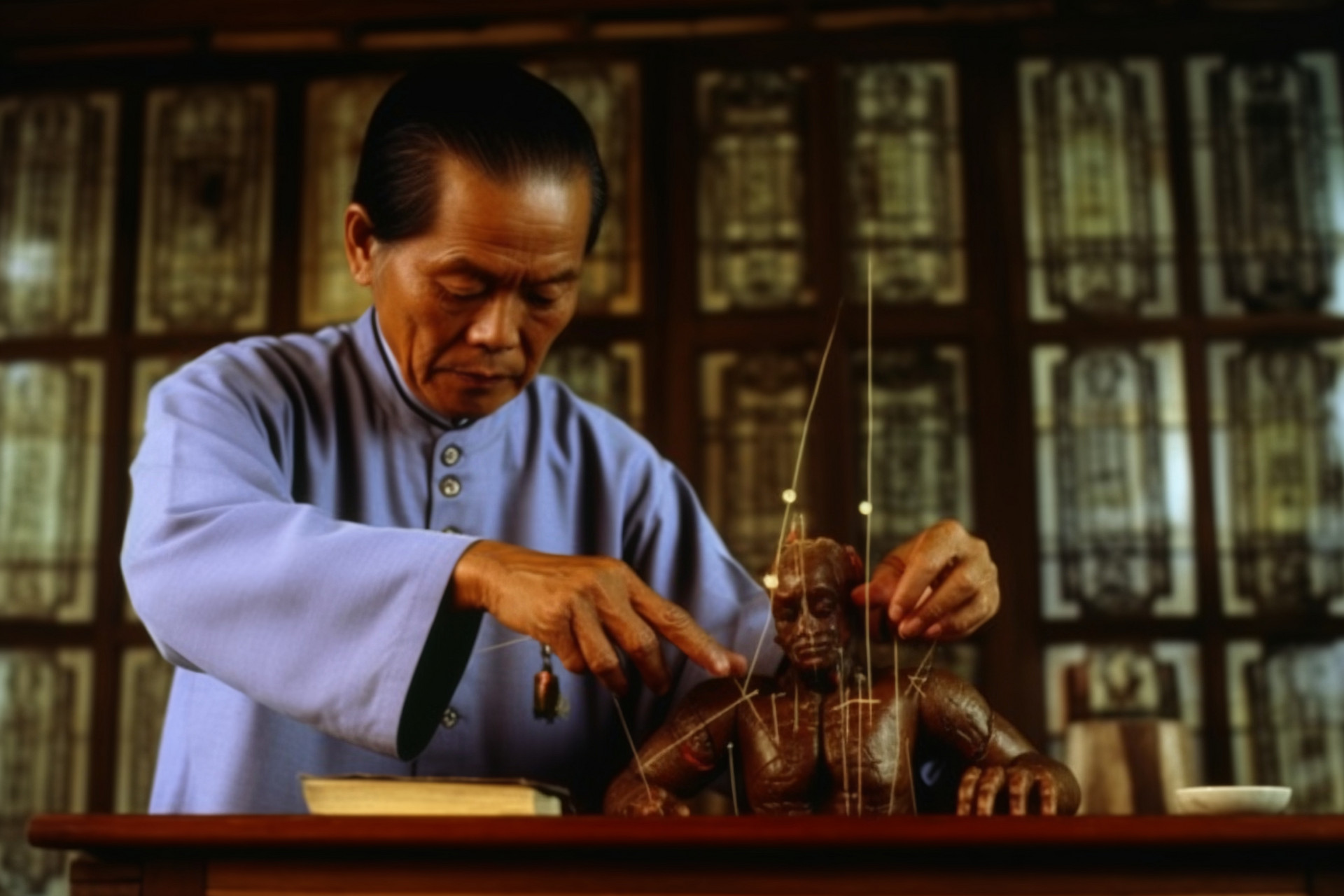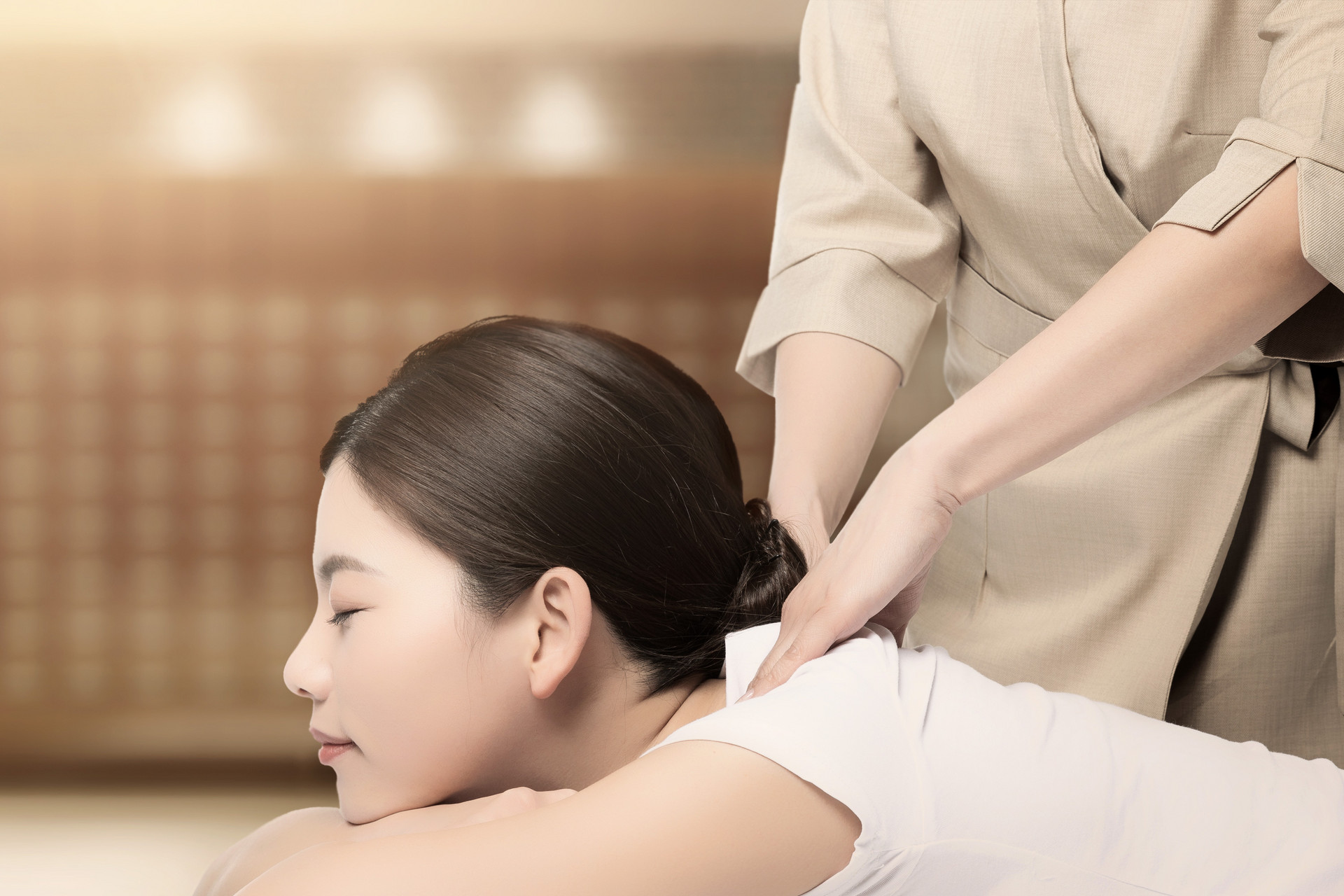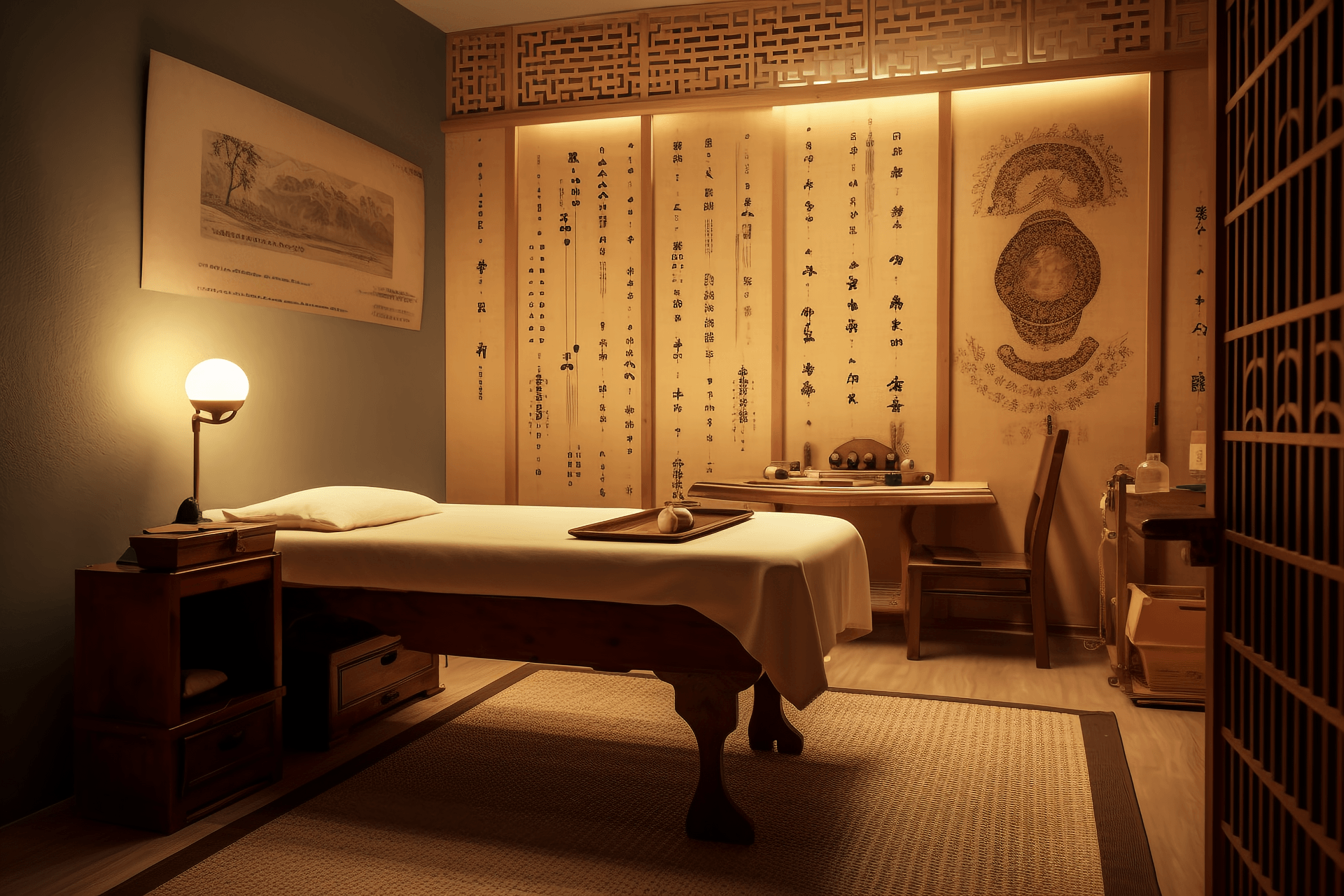Eye acupuncture is a method of treating systemic diseases by needling acupoints around the eyeball and the edge of the eye socket. The book "Needling and Acupuncture Jia Yi" by Huangfu Mi of the Jin Dynasty recorded the use of needling the ocular acupoints such as Jingming and Zanzhu to treat diseases. In the following dynasties, numerous acupuncture books mentioned this method, with an increasing number of acupoints and indications. It was developed based on the theories of the "Nei Jing" and Hua Tuo's "eye diagnosis". In the "Ling Shu • Da Huo Lun", it states, "The essence and energy of the five zang organs and six fu organs all ascend to the eyes to become essence. The essence of the socket is the eye, the essence of the bones is the pupil, the essence of the tendons is the black of the eye, the essence of the blood is the network, and the essence of the socket's energy is the white of the eye. The essence of the muscles is the constraint. The essence of the tendons, bones, blood, and energy is combined with the pulse to form a network, which is connected to the brain and exits from the neck... The eyes are the essence of the five zang organs and six fu organs, the constant nourishment of the ying and wei, and the birthplace of spirit and energy." This shows that the eyes are where the essence of the five zang organs and six fu organs is concentrated, and where the body's ying and wei, qi and blood, spirit and soul are stored. In addition to the Lung, Spleen, Kidney, and Pericardium meridians, which are indirectly connected to the eyes through their corresponding meridians, the remaining eight meridians all converge in the eyes. Therefore, needling around the eye socket can achieve the purpose of dredging the meridians, resolving stasis and pain, calming the mind and settling the will, and regulating the function of the zang-fu organs and qi and blood to treat systemic diseases.
[Operational Method]
1. Positioning of the ocular meridian region
Both eyes look straight ahead, draw a horizontal line through the center of the pupil and extend it through the inner and outer canthus, then draw a vertical line through the center of the pupil and extend it through the upper and lower eyelids. This divides the eyes into four quadrants, and each quadrant is further divided into two equal regions, resulting in four quadrants and eight equal regions. These eight equal regions are the eight meridian regions. The left eye belongs to yang, and yang generates yin, so the order of the eight regions is clockwise; the right eye belongs to yin, and yin generates yang, so the order of the eight regions is counterclockwise. However, the organs represented by each region are the same for both eyes. Region 1 represents the Lung and Large Intestine; Region 2 represents the Kidney and Bladder; Region 3 represents the Upper Jiao; Region 4 represents the Liver and Gallbladder; Region 5 represents the Middle Jiao; Region 6 represents the Heart and Small Intestine; Region 7 represents the Spleen and Stomach; Region 8 represents the Lower Jiao. Each region covers a time span of 90 minutes, similar to a clock. For example, Region 1 of the left eye is from 10:30 to 12:00; for the right eye, it is counterclockwise, with Region 1 from 7:30 to 6:00, and so on. The acupoints in each region are as follows: 2 acupoints in each of Regions 1, 2, 4, 6, and 7; 1 acupoint in each of Regions 3, 5, and 8. They are collectively referred to as the 13 acupoints of the 8 regions.
The meaning of the Three Jiao regions in eye diagnosis and the Three Jiao acupoints in eye acupuncture is not limited to the Heart and Lung in the Upper Jiao, Spleen and Stomach in the Middle Jiao, and Liver and Kidney in the Lower Jiao. Instead, based on the discussions of the Three Jiao in the "Ling Shu • Ying Wei Sheng Hui", "Nan Jing • Thirty-One Difficulties", and "Yi Jing Jing Yi Zang Fu Suo Shu", the distribution of the Three Jiao is expanded to the entire body. The Upper Jiao refers to above the diaphragm, including the head, face, facial features, upper limbs, chest, back, heart, lungs, esophagus, trachea, etc.; the Middle Jiao refers to below the diaphragm and above the level of the navel, including the waist, back, upper abdomen, and the visceral organs in the corresponding regions; the Lower Jiao refers to below the level of the navel, including the lumbosacral region, pelvic cavity, buttocks, urinary and reproductive systems, lower limbs, etc.
The acupoints in eye acupuncture summarize the functions of the 361 meridians in the body into 13 acupoints, which are all located around the edge of the eye socket, about 2 fen in width. These acupoints are not found in ancient and modern acupuncture books, so they are collectively referred to as "eye socket acupoints".
2. Eye diagnosis method
The human eyeball has the most blood vessels. Hua Tuo's statement that "there are six major collaterals inside...eight minor collaterals...and numerous collateral branches outside, and no one knows their number" is quite consistent with anatomical reality. When diagnosing diseases through eye diagnosis, only the blood vessels on the conjunctiva of the eyeball are observed. In a normal person, the blood vessels on the conjunctiva are fine and not obvious. After the occurrence of a disease, the shape and color of the blood vessels change, and the disease can be diagnosed based on these changes.
1. Changes in blood vessel shape
(1) The base of the blood vessels becomes thicker, often occurring above the horizontal line of the pupil. If the base is above, it is often due to blood stasis.
(2) The blood vessels become tortuous or even dilated, often indicating blood stasis.
(3) The blood vessels become longer and extend from one meridian region to an adjacent one, indicating the spread of a disease from one meridian to another.
(4) The blood vessels branch out like branches of a tree, often occurring below the horizontal line of the pupil. If the base of the lower blood vessels is below, they divert upward, causing nearby blood vessels to expand and branch out. This often indicates blood stasis, and this phenomenon is often seen in the heart region of the left eye.
(5) It appears as if a blood vessel is raised on the conjunctiva, often occurring when there is a disease in the six fu organs. For example, if the blood vessels in the large intestine region of the left eye are raised, it often indicates hemorrhoids or anal disease; if the blood vessels in the small intestine region of the right eye are raised, it often indicates duodenal bulb ulcer.
(6) Blood stasis clots into patches, often occurring in the liver, gallbladder, and lower jiao regions, indicating stagnation.
(7) It appears like dewdrops hanging down, with the extended ends of the blood vessels resembling hanging dewdrops. This is often seen in patients with intestinal parasites or blood stasis.
2. Changes in blood vessel color
(1) Purple-red color: often indicates heat accumulation. Heat stagnation
| 1 2 3 > >> >>|




